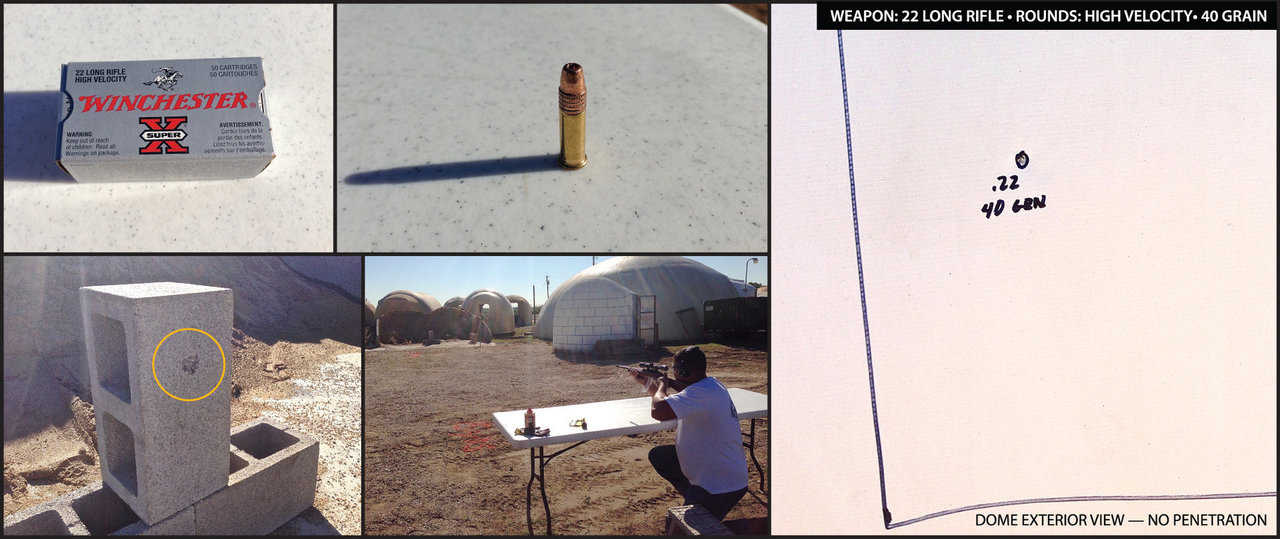The Bullet Test
As they say on TV, “Don’t try this at home.” Don’t shoot holes in your home with a 30-06 caliber rifle.
To test the bullet-resisting strength of a Monolithic Dome, Gary Clark, our VP of Sales, fired at our Monolithic Dome storage buildings. He fired from very close range, nearly perpendicular to the dome. He shot one round into each of two of our 32-foot diameter shops.
The first bullet entered through the Airform leaving a hole about the size of a pencil and disintegrated inside that hole. We dug out the bullet later, and it was totally flat. That bullet, fired from a 30-06, was a 180 grain hunting bullet with a full copper jacket – the same type of ammunition used in World War II in the Garand Rifle and far more powerful than today’s M-16 bullet.
When hit with a round from the 30-06 rifle, the second dome’s wall lost a small piece of concrete about the size of a fist, but the bullet did not penetrate.
This experiment showed that the Monolithic Dome can withstand a substantial amount of rifle fire. Certainly, it can withstand any pistol fire or anything smaller than a heavy duty 30-06 at a point blank range and perpendicular.
Projectiles
Any projectile fired at a surface will dramatically loose its effect at an angle. Compared to non-rounded structures, a dome obviously presents a far smaller area perpendicular to the plane of any projectile.
On the other hand, rifle fire is not the same as a two-by-four doing 100 miles an hour. The two-by-four has an extraordinary mass. Nevertheless, a four-inch reinforced concrete wall will stop that two-by-four. Very few Monolithic Domes have wall sections with less than four inches of concrete.
A Monolithic Dome’s urethane foam, sandwiched between its Airform and its concrete, also mitigates a projectile’s impact – be it large or small. In addition, that foam absorbs a large amount of energy, especially off a projectile with a large surface, such as a two-by-four. Since the urethane blankets concrete that is super strong, the chances of penetration become extremely small.
Beneficial Curves
Now add that to the fact that the dome is curved. A curved surface, especially curved in two dimensions as the dome is, dramatically changes the dynamics of an impinging force. The force is immediately directed around the dome rather than concentrated into the impact point. This is especially true of something like a two-by-four and less true with something like a rifle bullet.
So, a compound curve adds a huge amount of projectile-repelling value. In fact except for doors and windows, a projectile really is not a problem to a Monolithic Dome.
Experts have tried to calculate what would happen if an eighteen wheeler flew through the air and landed on a Monolithic Dome. The consensus is that if you could get an airborne truck to hit a Monolithic Dome, the dome might crack but would not cave in.
But what about a car sent flying by a tornado? It would not have enough mass or tornado-produced energy to be a serious factor when and if it landed on a Monolithic Dome.
The Monolithic Dome and Tornadoes
If you’re in a Monolithic Dome and you hear the onset of a tornado, it’s a good idea to move up against the dome wall to avoid getting hit by shattered window glass.
But don’t worry about your dome-home. It can handle tornado pressure, both inside and outside, so the loss of one window only means that some air is blowing around outside. If you lose windows on both sides of the house, the wind can blow through and damage some of your possessions, but if you stay against the concrete wall you will be as safe as reasonably feasible.
Peace of Mind
You can feel it in a Monolithic Dome during a storm. You quickly realize you might lose the dog house, the trampoline, the carport and even the porch, but at least the dome you are in will survive. It’s also comforting to know that you don’t have to stay up all night watching television to make sure the tornado watch is cancelled. You can go to bed. The risk is definitely minimized within a Monolithic Dome.
Each person must decide what is an acceptable risk. In the past, conventional construction did not offer much in the way of tornado protection, except for building an expensive separate structure as a shelter. But a Monolithic Dome provides near-absolute protection, in most cases, without spending any extra money. In fact, in the long run, the dome’s energy efficiency will save you more.
opd 08132010
ud 10182013
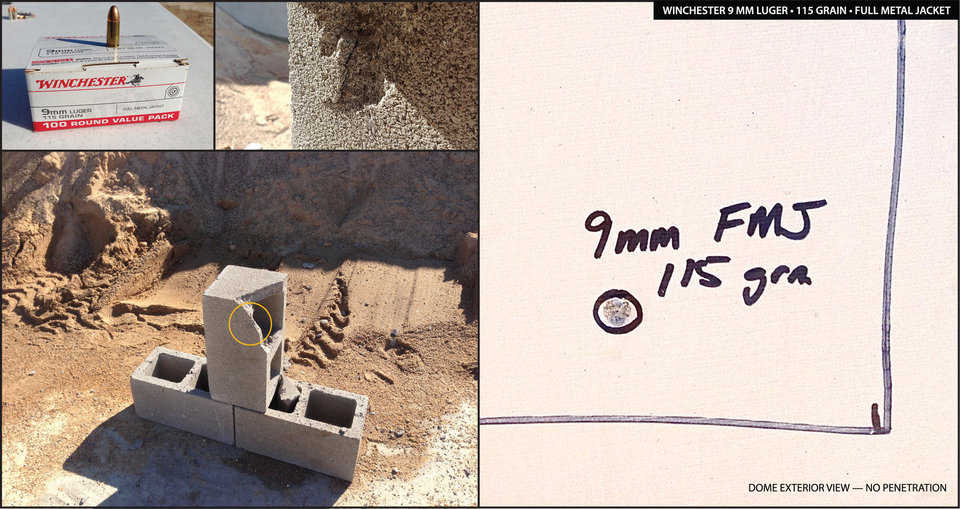
The pistol used in this demonstration was a TZ-75 9mm, using a 115 grain full metal jacket projectile. The 9mm was able to break the concrete block, but there was no penetration into the Monolithic Dome. (Mike South)
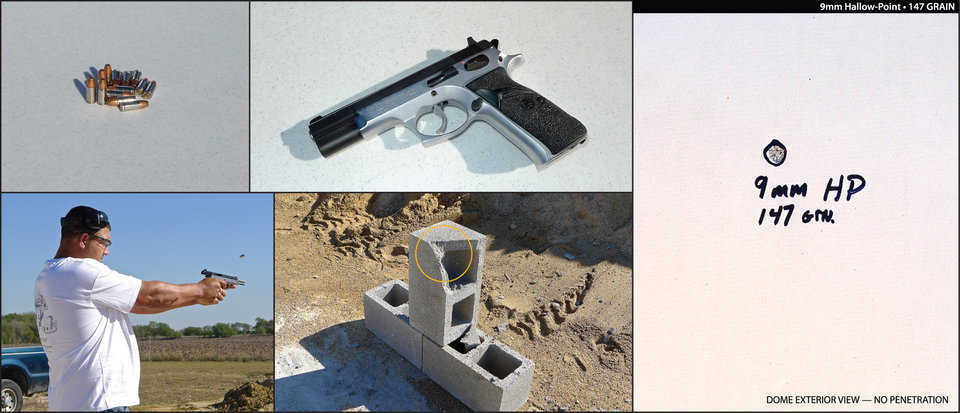
The pistol used in this demonstration was a TZ-75 9mm, using a 147 grain hollow point projectile. This heavier round did similar damage, but did not penetrate the Monolithic Dome. (Mike South)
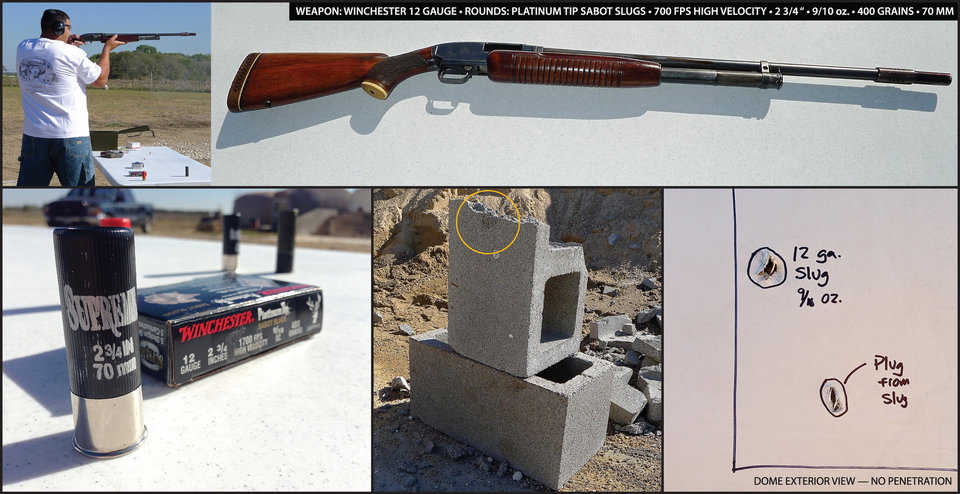
This is a Remington 12 gauge shotgun. For this test, we used a 400 grain slug. This round was very heavy, and it destroyed the cinder block, but there was no penetration into the Monolithic Dome. (Mike South)
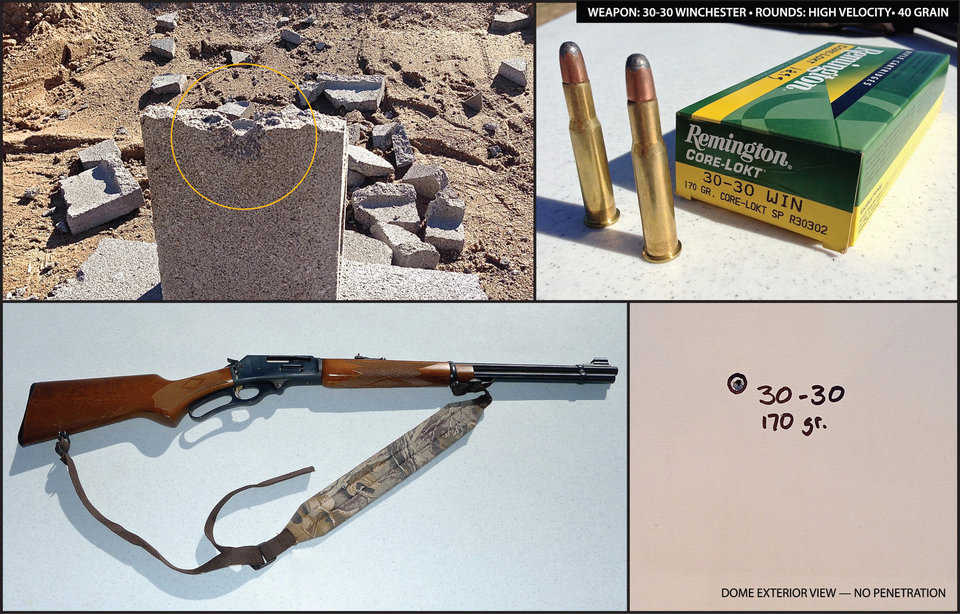
The rifle used in this test was a Winchester 30-30, with a 40 grain hunting round. The rifle destroyed the block, but there was no penetration into the Monolithic Dome. (Mike South)
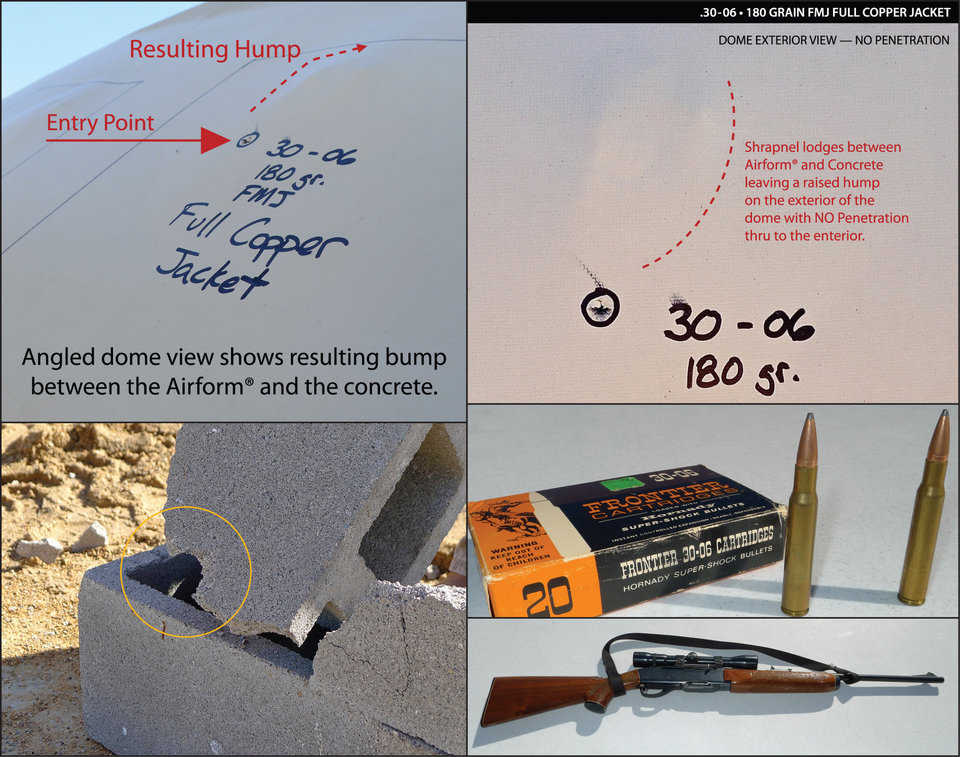
This rifle is a 30-06 and is by far the most powerful projectile that we shot at the Monolithic Dome. For this test we used a 180 grain, full metal jack round. It destroyed the cinder block. There was no penetration into the Monolithic Dome. By the top left picture, you can see that the projectile hit the dome and was deflected up the dome shell. (Mike South)
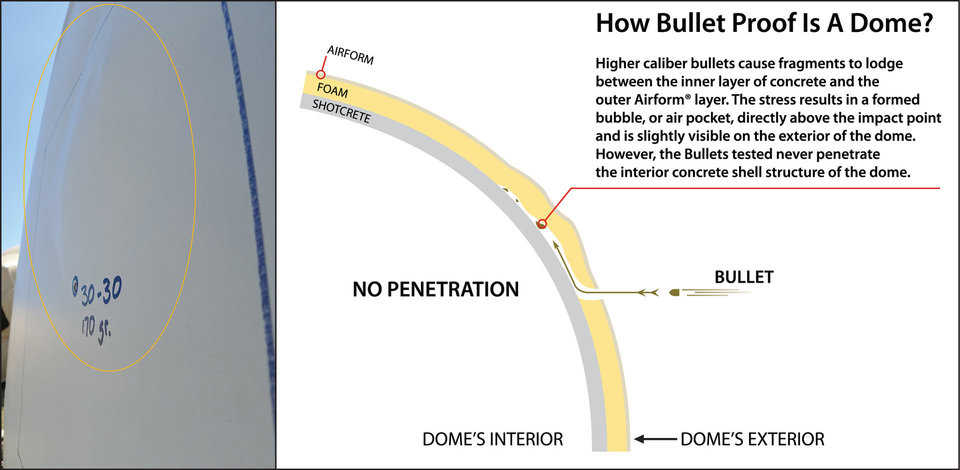
This image further explains what happens to a projectile that hits the Monolithic Dome. A powerful round is first slowed by the Airform and foam, then is deflected by the hard inner shell and is trapped between the foam and concrete. (Mike South)
